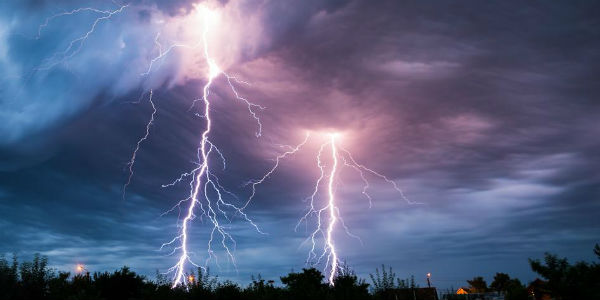
Climate Change is moving the energy in the air that energizes mid year climate, which may prompt stronger thunderstorms and progressively dormant conditions for areas of the Northern Hemisphere, including India, as per an MIT study.
The study was published in the Journal Proceedings of the National Academy of Sciences, found that rising worldwide temperatures, especially in the Arctic, are redistributing the atmosphere’s energy.
More energy is accessible to fuel thunderstorms and other convective procedures, while less energy is going to summertime extratropical violent winds - bigger, milder weather systems that circulate over several thousand kilometres.
These weather features are regularly connected with winds and fronts that produce rain.
"Extratropical tornados ventilate air and air contamination, so with more fragile extratropical twisters in summers, you are taking a gander at the potential for increasingly poor air-quality days in urban regions," said Charles Gertler, a student at the MIT.
"Moving past air quality in urban areas, you have the potential for stormier thunderstorms and increasingly stale days with heat waves that last way longer.
There are expansive weather systems affecting poleward of the Earth's tropical zone in contrast to increased cyclones including hurricanes, typhoons etc.
Extratropical hurricanes or cyclones feed off the horizontal temperature gradient of the atmosphere, which is the difference in normal temperatures among northern and southern latitudes.
This temperature gradient and the dampness in the atmosphere creates a specific measure of energy in the atmosphere that can be a reason for weather events.
The more prominent the inclination between, state, the Arctic and the equator, the stronger the cyclone.
Researchers took a look at the ERA-Interim Reanalysis, a project that has been gathering accessible satellite and weather balloon estimations of temperature and humidity across the globe since the 1970s.
From these estimations, the project creates a fine-grained worldwide network of evaluated temperature and moisture, at different heights in the atmosphere.
From this estimate, the group concentrated on the Northern Hemisphere, and areas somewhere in the range of 20 and 80 degrees latitudes.
They took the normal summer temperature and humidity in these districts, between June, July, and August for every year from 1979 to 2017.
The analysts at that point put yearly average of summer temperature and humidity in an algorithm which measures the amount of energy available in the atmosphere, given the temperature and humidity conditions.
"We can perceive how this energy fluctuates throughout the years, and we can likewise isolate how much energy is accessible for convection, which would manifest as thunderstorms, versus extratropical cyclones," said Associate Professor Paul O'Gorman from MIT.
Since 1979, they found the energy accessible for expansive scale extratropical cyclones has diminished by six percent, though the energy that could fuel smaller, and local thunderstorms has gone up by 13 percent.
Their outcomes reflect some recent evidence in the Northern Hemisphere, proposing summer winds related to cyclones have diminished due to Global Warming.
Observations from both Asia as well as Europe have shown strengthening of convective rain from thunderstorms.
Image Credit: national geographic


